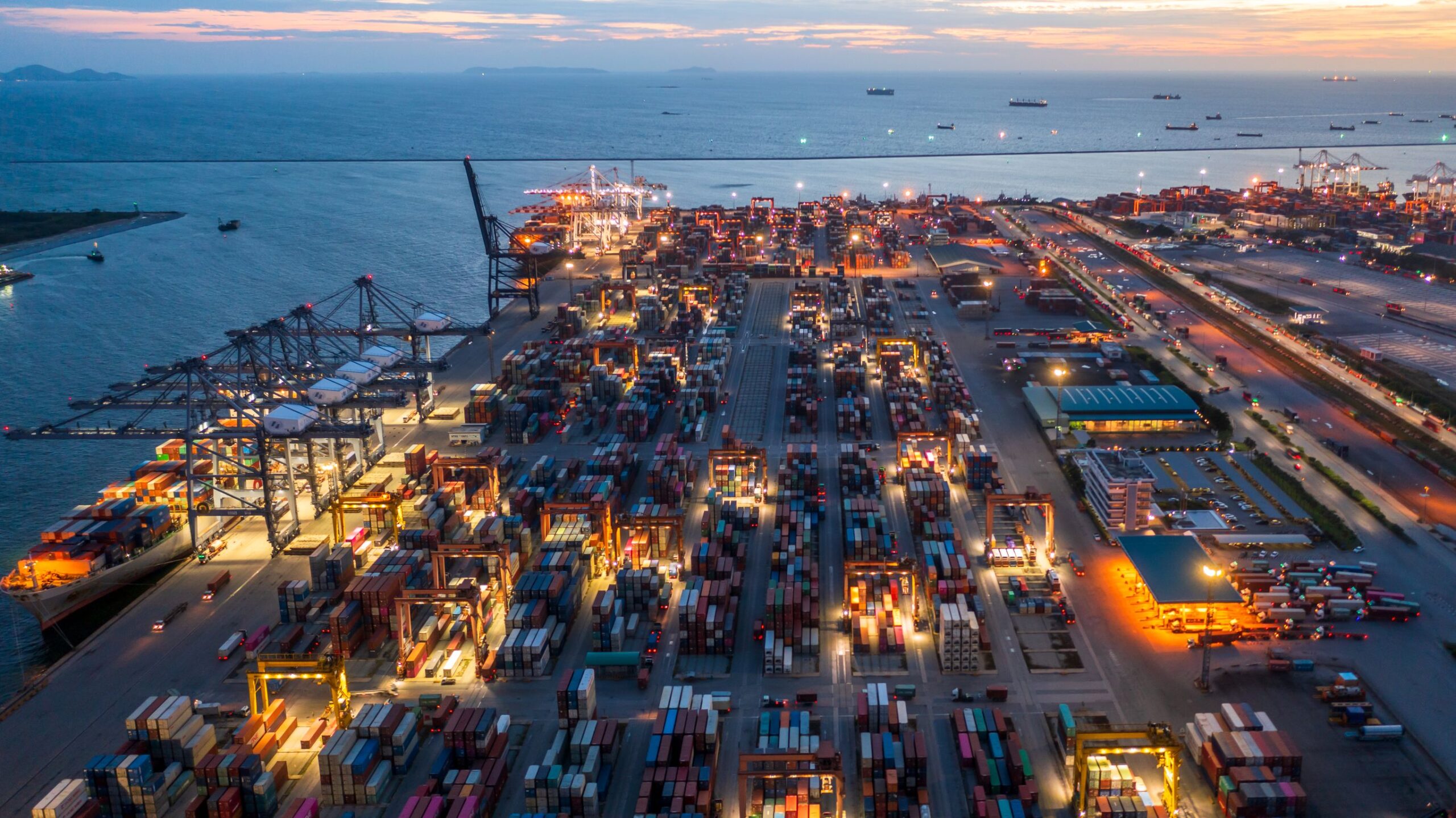At LCX Freight, we don’t just move goods—we move your business forward. In this post, we dive into how Trump tariffs freight forwarding impacts equipment, trade lanes, and carrier strategies. Then, we explore how LCX Freight’s handling expertise and scalable international solutions help businesses navigate turbulence in global logistics.
1. Trump’s 2025 Tariffs: A Trade Shake-Up with Far‑Reaching Effects
1.1 The Big Picture
In 2025, President Trump reignited large-scale tariffs: steel and aluminum surged to 50%, automotive parts at 25%, impacting industries like freight forwarding under the Trump Tariffs policy, and sweeping “liberation day” reciprocal tariffs starting at 10%, with up to 55% on Chinese goods. These were later offset slightly, but as of June, average rates remained at a historic 15.8% Wikipedia.
Key highlights:
- Steel, aluminum, copper, trucks, pharmaceuticals, semiconductors, appliances hit under Section 232.
- De minimis exemption removed for China, Canada, Mexico—small shipments now face duties.
- Steel and aluminum rose to 50% June 4; tractor-trailer trucks investigated April 22.
1.2 Immediate Industry Fallout
- Equipment cost surge: Freight forwarders faced sharp cost increases for trucks, trailers, containers, racking, and cold-storage units due to steel, aluminum, and truck-part tariffs .
- Route disruption: Chinese exporters rerouted via Southeast Asia (Vietnam, Indonesia, Thailand) to mitigate import duties. (Financial Times).
- Port congestion: Truck and rail shipments slowed at major gateways—Los Angeles, Savannah, Long Beach—as cargo volumes and sourcing dynamics fluctuated.
- Freight volume decline: The National Retail Federation projected a 15% drop in import cargo soon after tariff rollouts.
- Spot market volatility: Morgan Stanley spotlighted depressed rail and trucking volumes, with carrier stocks down ~10% year-to-date. (Barron’s).
2. Freight Forwarding: Why It’s Directly in the Line of Fire
2.1 Equipment Inflation
Tariffs on steel, aluminum, and trucks have materially raised purchase prices, vehicle replacement costs, and container fabrication. Businesses relying on Chinese parts or Mexican-assembled trucks may see replacement costs rise ~22% (Cognitive Market Research).
2.2 Shifting Trade Lanes
Forwarders have had to reroute shipping from established China→US lanes to emerging Southeast Asian and Latin American routes due to the impact of Trump Tariffs Freight Forwarding. This means building new partnerships, customs pipelines, and intermodal linkages from scratch.
2.3 Operational Complexity
The end of the de minimis exemption pressures carriers to process many more low-value, duty-paid parcels—with customs documentation and compliance infrastructure, a challenge intensified by Trump Tariffs Freight Forwarding requirements.
2.4 Demand Shockwaves
Initial stockpiling ahead of tariff windows triggered import spikes, followed by a sharp slump—dismantling volumes and pressuring carrier planning in the context of Trump Tariffs Freight Forwarding.
2.5 Evolving Pricing Landscape
Freightos and others expect container rates to normalize downward due to overcapacity, while spot markets stay volatile. In the context of Trump Tariffs Freight Forwarding, carriers must hedge between contract and spot pricing.
3. Broader Economics & Market Response
3.1 Macroeconomic Trends
FT reports indicate import volume from China plunged ~43% year-over-year by May, navigating temporary pauses and stockpiling, with tariff revenue at $24.2 billion in May Financial Times.
3.2 Sector Gains & Losses
Container-ship owners like Global Ship Lease benefit from flexible mid-sized fleet demand as shippers opt for alternative routes, partly influenced by Trump Tariffs Freight Forwarding strategies. However, broader freight stocks remain weak amid market jitters.
3.3 Resilience Signals
Experts stress that while small firms suffer under the Trump Tariffs, the broader economy remains resilient; logistics players pivot via “China + 1” setups and third-country routes, showcasing innovative freight forwarding strategies.
4. LCX Freight: Navigating the Turbulence with Confidence
At LCX Freight, we turn tariffs into strategy through five proven pillars:
4.1 Smart Equipment Strategy
Our team closely monitors availability and tariffs on trucks, containers, chassis, and aggregation equipment, including the impact of Trump Tariffs on Freight Forwarding. We procure early, negotiate volume discounts, refurbish selectively, and absorb market shocks—minimizing cost passage to clients.
4.2 Adaptive Trade-Lane Models
Backed by global partnerships, we:
- Shift shipments from China to Southeast Asia, Latin America, or Mexico routes.
- Build customs & compliance capabilities at new hubs.
- Use mid-sized fleets aligned with nimble carriers like Global Ship Lease .
4.3 Real-Time Congestion Monitoring
We integrate port congestion intelligence tools across major gateways (LA, NY, Savannah, etc.), triggering dynamic reroutes to avoid bottlenecks, minimize demurrage/detention costs, and optimize Trump Tariffs Freight Forwarding strategies.
4.4 Customs Readiness & Compliance
With de minimis rules ended, we’ve scaled training and tech systems to handle increased parcel customs processing—with accurate tariff filings, tariff classification audits, and digital tracking validation. Our expertise in Trump Tariffs Freight Forwarding ensures efficient and compliant shipping every step of the way.
4.5 Cost Transparency & Freight Hedging
LCX Freight uses blended pricing strategies—establishing contract rates for staples and spot flexibility for tactical lanes, while passing detailed cost reports through build-up models to prevent surprises.
4.6 China‑Plus‑One Supply Strategy
We conduct feasibility audits to recommend shifting production to viable “plus one” destinations, handling local forwarding, customs, and last-mile delivery to ensure continuity, tariff avoidance, and seamless Trump Tariffs Freight Forwarding.
5. Real-Life Success – LCX Freight in Action
Multinational Electronics Client
Facing 55% Chinese import tariffs under the Trump Tariffs Freight Forwarding era, LCX Freight engaged partners in Vietnam and Thailand to form alternate routing pipelines. We secured mid-sized vessel contracts and reconfigured customs on-boarding channels—saving 18–22% overall freight costs while maintaining delivery speed.
Heavy Machinery Importer
Truck-part prices spiked due to Section 232 tariffs on parts imported from Canada, also known as Trump Tariffs. We sourced refurbished North American trailers, coordinated trucks outside customs reach, and deferred capital purchases—reducing CAPEX and maintaining service quality through strategic freight forwarding.
E‑commerce Marketplace
Elimination of de minimis exemptions threatened volume-based profitability. We deployed software-enabled tariff filtering; structured shipments via bonded warehouses; educated sellers on HTS codes—all yielding 30% faster customs clearance and lower per-shipment cost.
6. Best Practices Amid Tariff Volatility
Proactive Monitoring – Keep a pulse on tariff rulings (steel, trucks, electronics, pharma) via official channels like USTR and CBP to stay informed about Trump Tariffs Freight Forwarding updates.
Diversified Supply Lanes – Expand sourcing across geographies to avoid localized disruption.
Equipment Lifecycle Planning – Schedule fleet replacements before tariff-driven price hikes.
Hedged Freight Strategy – Combine contract lanes with spot flexibility to manage margin exposure.
Compliance Investment – Use digital tools and staff training to navigate customs and documentation complexity.
Client Collaboration – Proactively share tariff impacts, price forecasts, and contingency plans related to Trump Tariffs Freight Forwarding to build trust and transparency.
7. Looking Ahead: 2025 and Beyond
- Steel, aluminum, and truck part tariffs currently paused until August/September 2025. LCX Freight will monitor and plan renewals proactively.
- Additional Section 232 investigations into semiconductors, aircraft, and pharmaceuticals may emerge.
- De minimis reinstatement remains unlikely; parcel brokers must maintain customs systems.
- As vessels reroute, we’ll continue adding secondary hub partnerships to maintain agility.
Conclusion
The sweeping Trump tariffs freight forwarding landscape presents both rising costs and complexity—but also avenues for forwarders with strategy, flexibility, and insight. LCX Freight offers:
- Early equipment sourcing and negotiation strategies
- Adaptive routing with custom hubs and dynamic congestion pivots
- Strong customs tech and compliance operations
- Blended pricing models and client transparency
- China-plus-one support for next-gen supply chains
Got questions or need a freight-forwarding partner that stays one step ahead? Let’s connect and ensure your logistics are ready for whatever tariff wave comes next.
About LCX Freight
LCX Freight moves your business forward with specialized handling, scalable freight-forwarding solutions, and excellence at every touchpoint—locally or globally.
Ready to future-proof your freight strategy? Contact LCX Freight today for a free evaluation and tariff-resilience roadmap.




